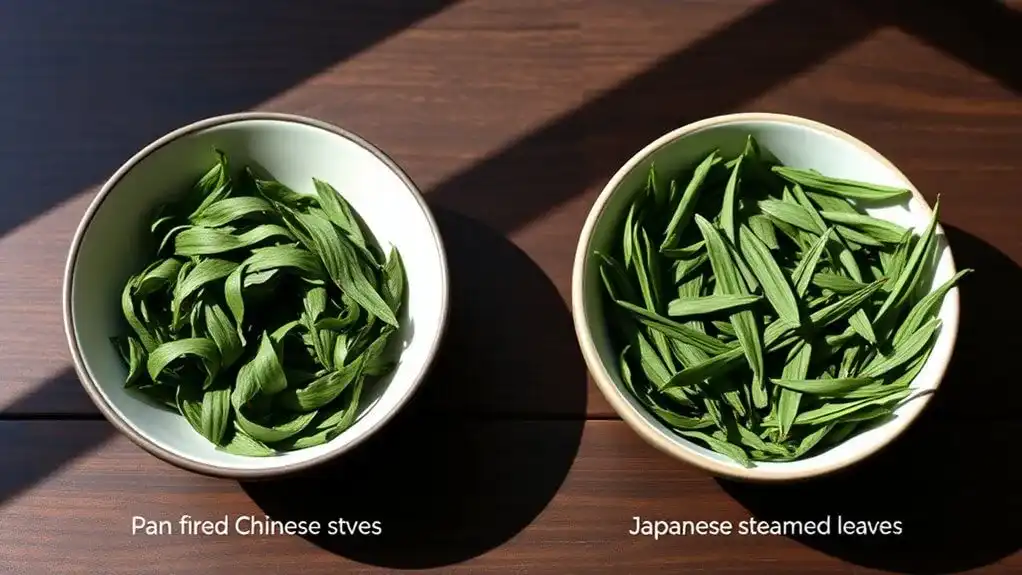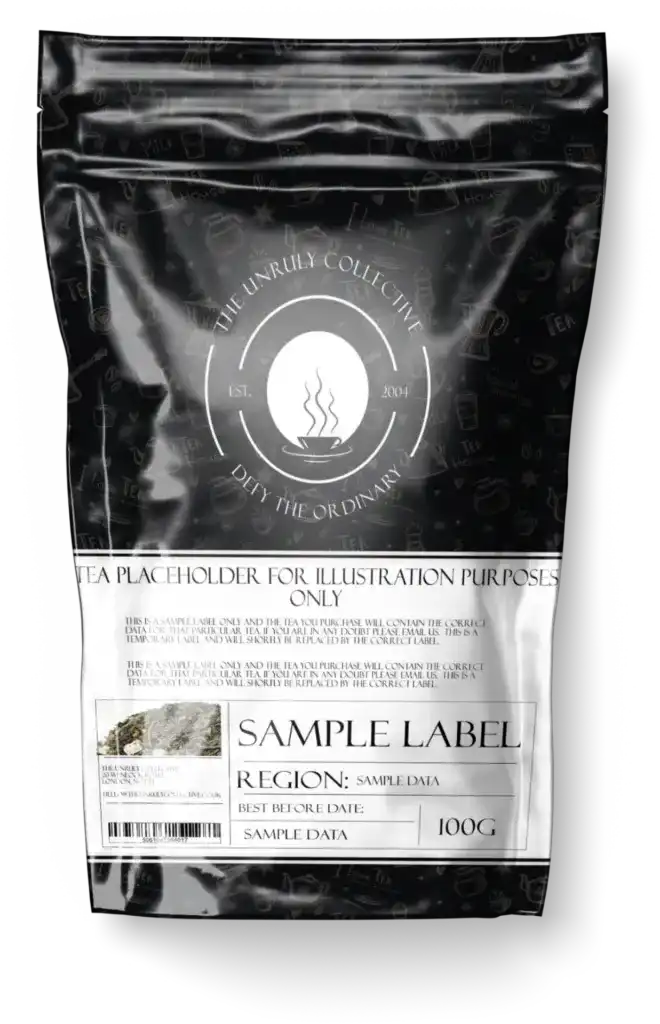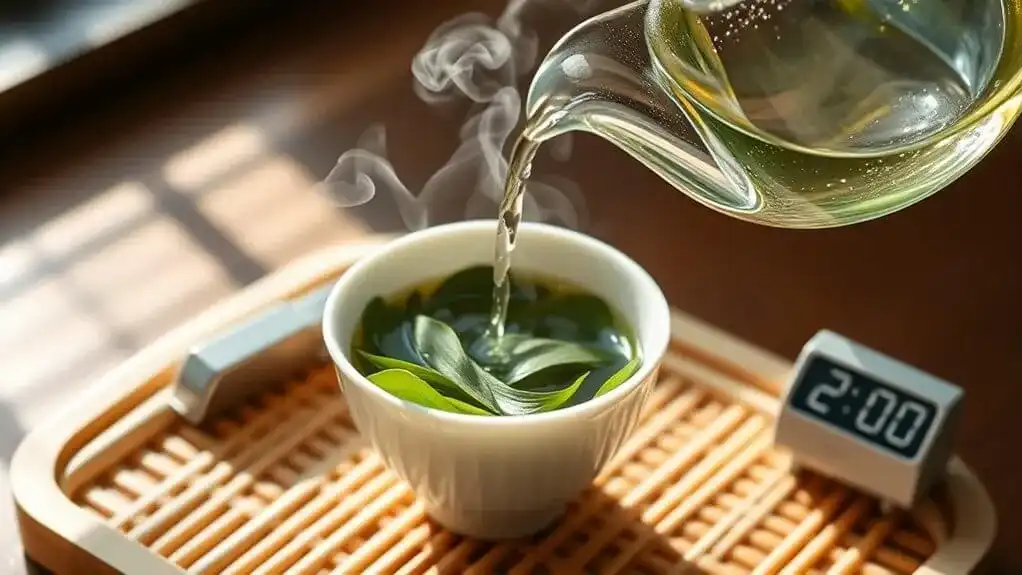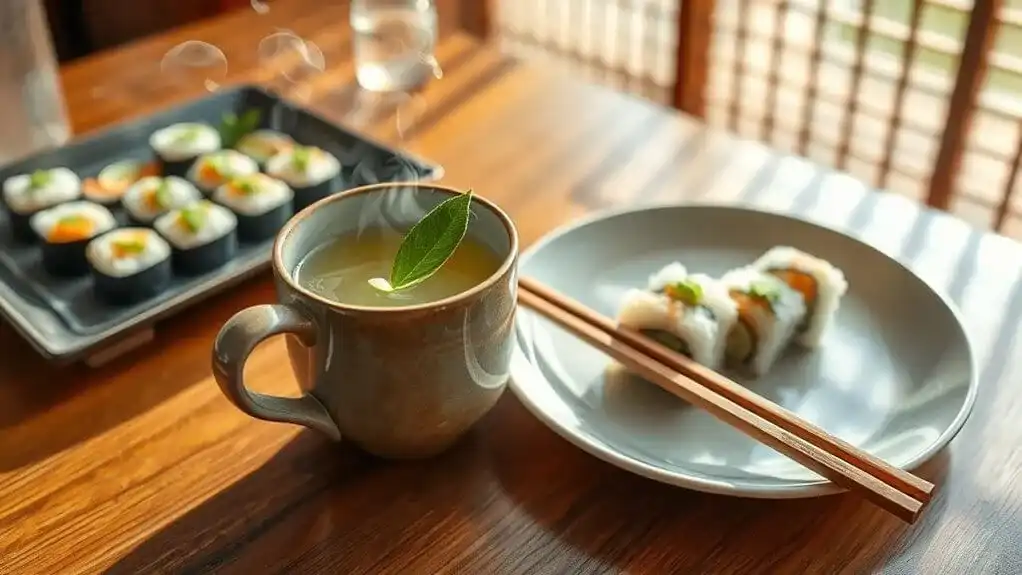Chinese and Japanese green teas differ primarily in their processing methods. Chinese tea makers use pan-firing, creating toasty, nutty flavors that can withstand higher brewing temperatures (170-195°F). Japanese producers prefer steaming, which yields bright green leaves with grassy, vegetal notes and requires gentler brewing (131-158°F). These distinct techniques shape each tea's unique character, from appearance to antioxidant content. The rich traditions behind these methods reveal a fascinating world of cultural expertise.
Key Points
- Pan-firing in China creates toasty, nutty flavors, while Japanese steaming produces bright green colors and vegetal notes.
- Chinese pan-firing involves multiple stages of firing and rolling, whereas Japanese steaming maintains 75% water content in leaves.
- Japanese steamed teas require lower brewing temperatures (131-158°F) compared to Chinese pan-fired teas (170-195°F).
- Steamed Japanese teas retain higher antioxidant levels and theanine content than Chinese varieties.
- Pan-fired leaves show brownish undertones with robust texture, while steamed leaves maintain bright green color with consistent texture.
The Art of Tea Fixation: Pan-Firing and Steaming Methods

When it comes to green tea processing, two main fixation methods have shaped the distinct characteristics of Chinese and Japanese teas: pan-firing and steaming. These methods represent centuries of tea craftsmanship, each yielding unique flavor profiles and aromas. Tea symbolizes hospitality in both cultures, deepening the significance of processing methods passed down through generations.
Pan-firing, mainly used in China, involves heating leaves in woks or drums, creating a toasty, nutty flavor evolution through multiple stages of firing, rolling, and drying. Modern manufacturers now employ large heated machines for more efficient production. In contrast, Japan's steaming method, introduced by Kobo Daishi in 804 A.D., produces teas with bright green colors and vegetal notes. The steaming process takes 20-60 seconds, depending on desired intensity, and helps retain 75% water content in the leaves. The process is performed using steaming drums that kill oxidizing enzymes in fresh leaves. While both techniques aim to inactivate enzymes, their distinct approaches have become defining characteristics of their respective tea cultures.
Processing Techniques and Their Impact on Flavor Profiles
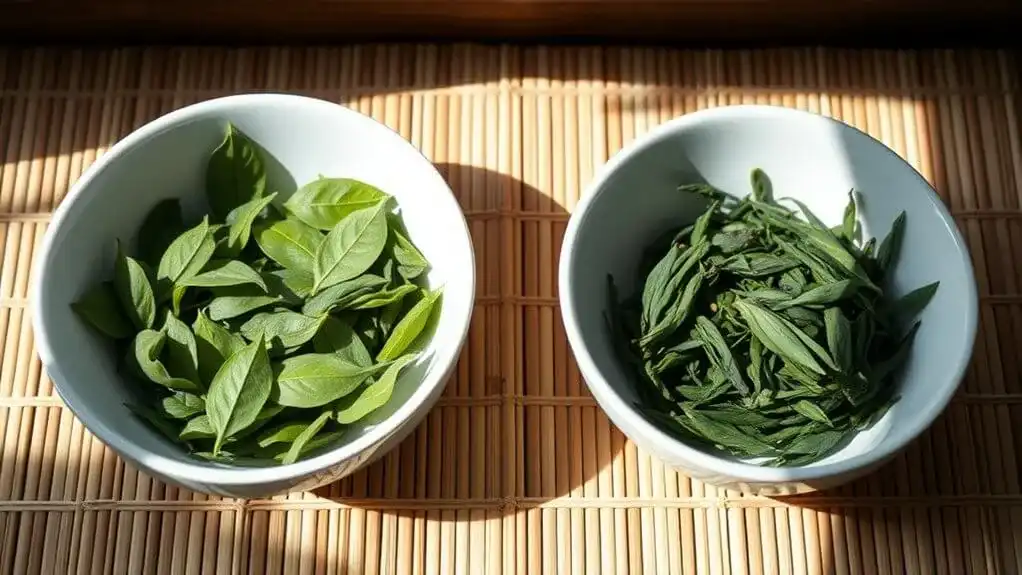
The distinct processing techniques employed in Chinese and Japanese green tea production create dramatically different flavor profiles, each reflecting centuries of cultural refinement. Chinese tea makers use pan-firing, which develops toasty, nutty characteristics and a wider spectrum of flavors ranging from sweet to smoky. In contrast, Japanese processing techniques rely on steaming, which produces distinctly grassy and vegetal notes. Rolling techniques create various distinctive leaf shapes like needles, curls, and snail-like forms that impact both aesthetics and taste. Primary processing ensures the tea's storability and optimal flavor development.
Regardless of method, the heat application during fixation helps maintain the tea's natural compounds and coloring. These processing techniques dramatically influence flavor development at every stage. Japanese green teas undergo minimal withering and quick processing near the tea gardens to preserve their fresh, vibrant taste. Meanwhile, Chinese methods allow for more variation in processing steps, resulting in diverse flavor profiles across different regions. Both approaches effectively prevent oxidation while showcasing their unique cultural heritage through distinct taste experiences.
Visual Differences in Leaf Appearance and Color

Chinese and Japanese green teas display striking visual contrasts due to their distinct processing methods. Pan-fired Chinese teas exhibit diverse color variations, ranging from light to dark green with brownish undertones, while their leaf texture appears more robust and sometimes rolled. The manual firing process creates a slightly toasted appearance, resulting in less vibrant hues compared to their Japanese counterparts. This visual difference occurs because Chinese teas are heated in woks during processing. Japanese green tea comes in over twenty varieties grown throughout the country. These traditional processing methods have remained largely unchanged for centuries, preserving the authentic appearance of both tea varieties.
In contrast, steamed Japanese teas maintain a bright, uniform green color due to rapid oxidation halting. Their leaves typically showcase a fresh, grassy appearance with consistent leaf texture and shape. This distinction is particularly evident in Japanese matcha, which retains its vivid green color through the steaming process. While Chinese Dragonwell presents a distinct roasted look, Japanese teas like Sencha demonstrate the characteristic brightness that steaming preserves.
Temperature and Timing: The Perfect Brewing Guide

Just as leaf appearance offers visual clues to processing methods, brewing temperatures and timing play distinct roles in extracting ideal flavors from Chinese and Japanese green teas. Chinese green teas thrive at higher temperatures, typically between 170-195°F, while Japanese varieties require gentler heat at 131-158°F to preserve their delicate umami notes. A flash rinse of the leaves at 180°F before brewing helps enhance flavor extraction and overall taste quality. The vegetal taste profile of Japanese teas comes from their unique steaming process during production. Naturally farmed teas deliver strong aftertaste without requiring low-temperature brewing methods.
Temperature variations greatly impact the final brew, with brewing equipment choices influencing heat retention and steeping consistency. Chinese teas respond well to gradual temperature increases of 10 degrees per infusion, while Japanese teas benefit from shorter steeping times at controlled temperatures. Both styles follow a standard ratio of 3 grams of tea per 5 ounces of water, but brewing times differ markedly. Pan-fired Chinese teas can withstand longer steeping, while steamed Japanese teas require more precise timing to prevent bitter notes.
Distinct Health Properties and Chemical Compositions
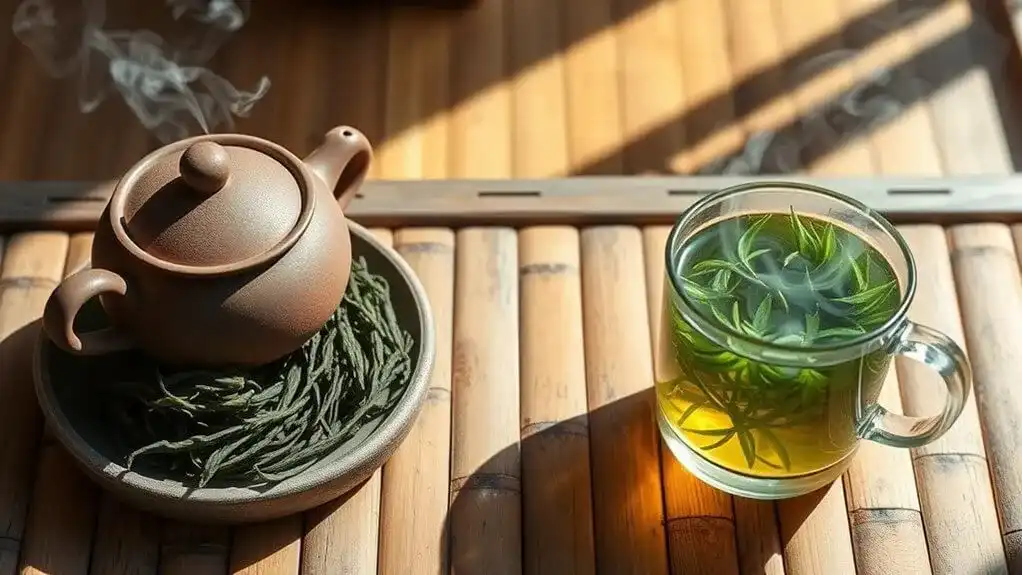
While both varieties of green tea share fundamental health-promoting compounds, Chinese and Japanese processing methods create distinct chemical profiles that influence their therapeutic properties. Japanese steamed tea typically retains higher levels of theanine and antioxidant benefits, contributing to enhanced stress relief and immune system support. The steaming process also helps preserve more of the tea's original polyphenol content, particularly EGCG. The presence of trace minerals contributes to their overall nutritional value. Regular consumption of these teas can help lower blood pressure through their rich flavonoid content.
Chinese pan-fired teas, with their unique heating method, develop a different antioxidant profile that still delivers impressive health benefits. These teas maintain significant levels of catechins and flavonoids that support heart health, reduce inflammation, and combat skin aging. Both processing methods yield teas rich in anti-cancer properties and compounds that boost cognitive function, though their specific concentrations may vary due to the distinct heating techniques. Daily consumption of either variety may lead to increased longevity, as supported by recent studies.
Regional Influences on Production and Quality Control

Regional differences play an essential role in shaping green tea production methods and quality standards across Asia. China's vast tea-producing regions, particularly Zhejiang province, rely on traditional pan-firing methods influenced by local cultural traditions. In contrast, Japan's concentrated production areas, like Shizuoka, employ modern steaming techniques and sophisticated machinery. The minimal oxidation process is critical for maintaining the distinctive character of green tea in both regions. Japanese tea production yields tea with 60% antioxidant content, significantly higher than Chinese varieties.
Regional climates and farming practices directly impact tea quality. Japanese farmers work closely with local co-ops to maintain strict quality control, resulting in uniformly processed, needle-shaped leaves. Their immediate steaming after harvest preserves the tea's natural sweetness and vibrant green color. Chinese producers, managing 80% of global production, often allow slight fermentation before processing, creating diverse flavor profiles. While this larger-scale production makes Chinese tea more accessible and affordable, Japanese green tea has established itself as a premium specialty product. In Japan, the most prized teas come from the first flush harvest in spring, setting the market standard for quality and price.
Evaluating Taste, Aroma, and Mouthfeel Characteristics
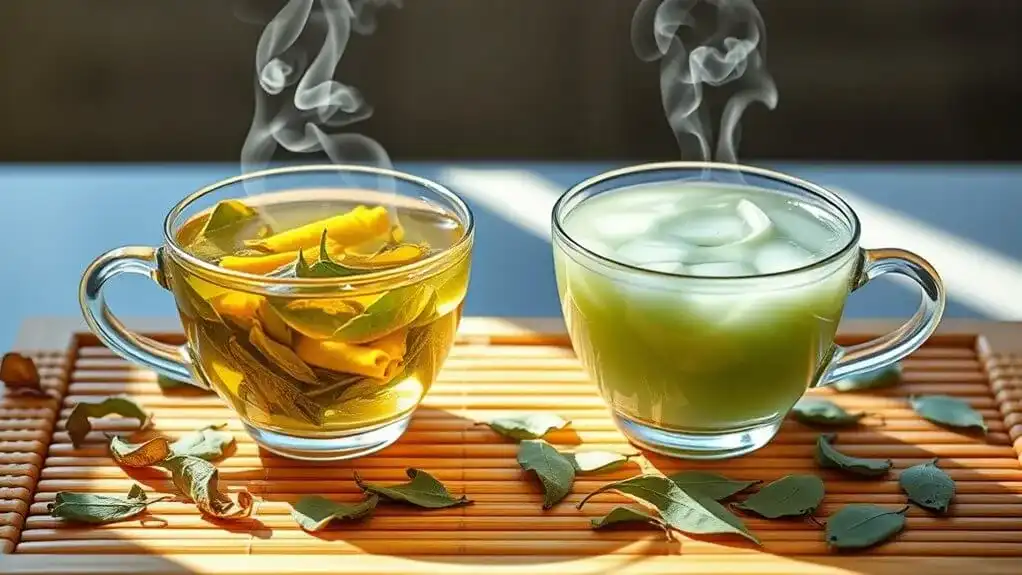
The distinct processing methods of Chinese and Japanese green teas create fundamentally different sensory experiences. Pan-fired Chinese teas exhibit robust taste nuances with toasty, nutty characteristics, while steamed Japanese teas deliver lighter, grassy notes. The aroma intensity varies greatly between these methods, with pan-fired teas showcasing pronounced toasty fragrances and steamed varieties offering subtle, fresh scents. Both processing methods help preserve the antioxidant content that makes green tea so beneficial.
Mouthfeel complexity also differs markedly. Pan-fired teas develop a rich, layered texture through their processing, while steamed teas maintain a smooth, invigorating quality. The flavor variability is particularly evident in specific varieties – Dragonwell's characteristic roasted chestnut notes contrast sharply with Sencha's distinctive umami profile. Chinese pan-fired varieties are notable for their distinctly sweet flavor that emerges during processing. These differences stem directly from their respective processing methods, highlighting how manufacturing choices fundamentally shape the tea's final character.
Conclusion
From the scorching heat of Chinese wok-firing to the billowing clouds of Japanese steam chambers, these two tea processing methods couldn't be more different. While pan-firing creates a toasty, nutty brew that'll transport you to a mountainside tea house, steaming produces an emerald elixir bursting with oceanic freshness. They're both winners in this centuries-old tea showdown – it's just a matter of whether you prefer your cup roasted or misty.
